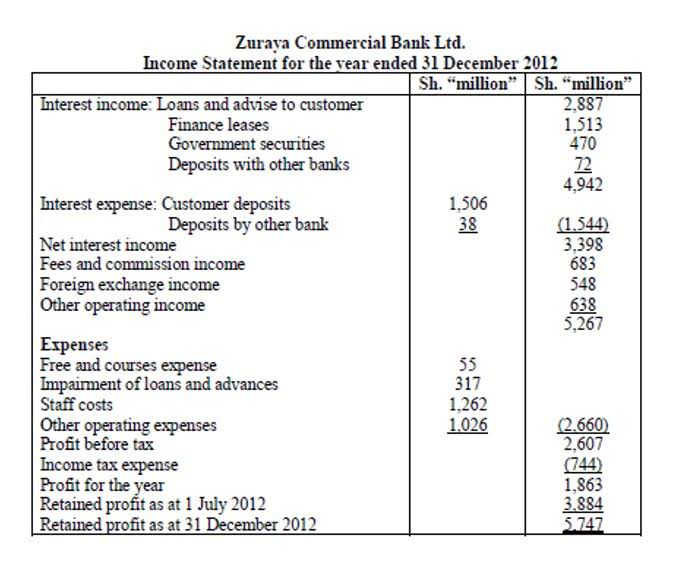
Contact our UK-based team: : info@campbellirvine.com

Accounting Adjustments: Adjusting Expectations: Accounting for Outstanding Checks in Financial Statements

Debt balances need to reflect the full picture of an organization’s financial commitments at a point in time, so this is done in various ways depending on the form of debt. The organization that issued the bond makes periodic payments to bondholders that go towards the interest owed on the bonds. Payments for the principal amount of the bonds are made at regular intervals or the entire principal amount of the bond is paid off at the date of maturity.

3.1.3 Checks written but not released

Typically, if real estate cash flow a loan is for the purchase of a specific asset, the asset will be used to secure the loan, as in the example of a mortgage for a house. If an organization pledges an asset as collateral for a loan and subsequently is not able to repay the debt, the collateral can be sold to repay the loan. Our detailed brochure provides insights into how Remote Books Online can help you maintain accurate bookkeeping, stay tax-ready, and make informed financial decisions. Discover how our tailored bookkeeping services can support your business growth and simplify your financial management. The check may also be delayed if the issuing entity puts off mailing the check for any reason.
Amortization of a loan

Efficient financial management is essential for businesses aiming to maintain stability and growth. One area that requires attention is the optimization of outstanding (O/S) checks, which can significantly affect a company’s cash flow and financial health. Managing O/S checks effectively is crucial for maintaining accurate records outstanding checks and ensuring liquidity.
- With Thomson Reuters, you can know that your firm has quick and easy access to valuable insights on business combinations, consolidation, financial instruments, income taxes, leases, and revenue recognition.
- Accurately tracking and presenting financial information can be complex, even for smaller organizations.
- Borrowing cash and paying over time allows organizations to obtain assets to use in their day-to-day operations without having all of the required cash on hand upfront.
- GASB Statement No. 34 (GASB 34) covers a broad range of subjects including the treatment of debt for state and local governments.
- Delve into the complexities of the evolving tax landscape and political shifts impacting your firm.
- Some loans have special clauses or covenants that must be factored into the measurement.
- Multiple parties can have a variable interest in a VIE; however, only one party can be identified as the primary beneficiary.
Optimizing O/S Checks for Enhanced Financial Management

Enhance financial management by optimizing O/S checks to improve cash flow, streamline reconciliation, and refine accounting practices. Through these case studies, it becomes evident that proper adjustment is not just a technicality but a strategic tool that shapes business decisions. It’s a testament to the fact that even the most granular elements of accounting, like adjusting for outstanding checks, can petty cash have far-reaching implications on a business’s trajectory. However, if a company voids one of its outstanding checks, the company will need to make an entry in its general ledger.
- This adjustment is crucial for stakeholders who rely on the balance sheet to assess the company’s financial health.
- However, market interest rates change very frequently, so the interest rate stated on the bond may be different from the current interest rate at the time of bond issuance.
- Tracking outstanding checks is a multifaceted challenge that requires a strategic approach and robust accounting systems.
- This adjustment is not just a mere formality; it’s a critical step in financial reporting and compliance with accounting standards.
- As we look towards the future of accounting adjustments, particularly in the realm of outstanding check management, it’s clear that the landscape is evolving.
- This could mislead investors or creditors evaluating the company’s liquidity position.

An outstanding check is a check that has been written and recorded in the issuer’s accounting records but has not yet been cleared by the bank. This means the recipient has not yet deposited or cashed the check, so the funds remain in the issuer’s account. Outstanding checks can cause discrepancies between a company’s recorded cash balance and the bank statement. Accountants then compare each transaction in the company’s ledger with the bank statement, flagging discrepancies for investigation.
- As the financial world becomes more complex, the tools and strategies used to manage these elements must also advance.
- As short-term and long-term debt are used differently in business, the distinction is important for the interpretation of financial statements.
- However, the rules for capitalization of costs are not always clear and, in these instances, it is especially important to exercise best judgement and diligently document the accounting conclusion.
- They advocate for robust internal controls that prevent and detect discrepancies.
- This lag can lead to a misrepresentation of the company’s available funds if not accounted for correctly.
- This means the recipient has not yet deposited or cashed the check, so the funds remain in the issuer’s account.

